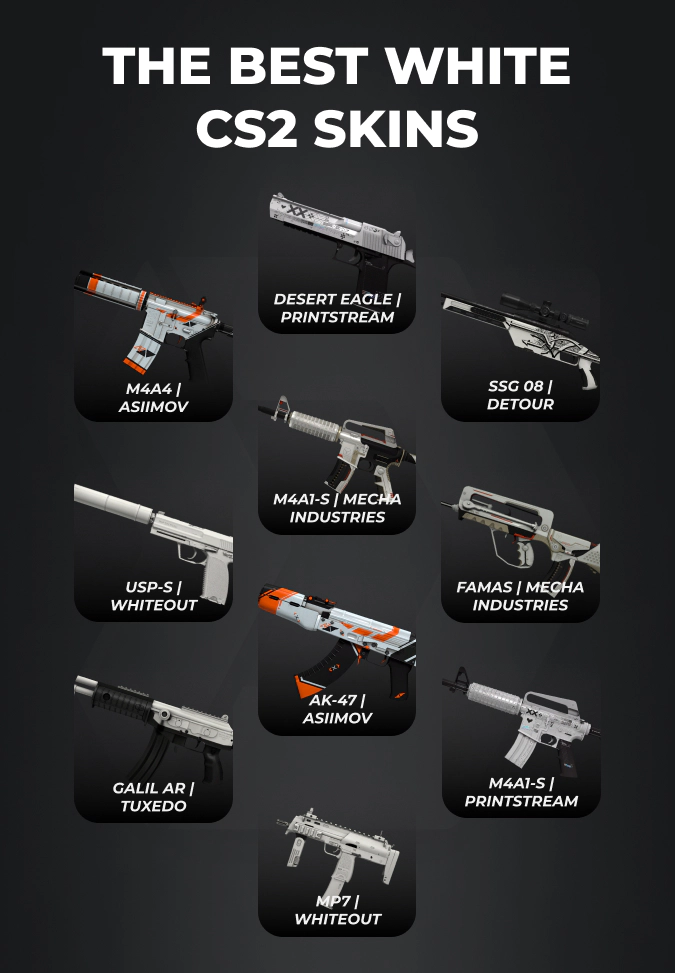Beauty Reports: Trends & Tips
Stay updated with the latest in beauty trends, tips, and product reviews.
Skinsational Choices: How CS2 Weapon Skins are Changing the Game
Discover how CS2 weapon skins are revolutionizing gameplay and player expression. Uncover the skinsational options shaping the game!
The Evolution of CS2 Weapon Skins: A Game-Changer for Players
The introduction of CS2 weapon skins marks a significant turning point in the gaming landscape, transforming not only how players engage with the game but also how they express their individual styles. Initially, weapon skins in video games were mere cosmetic changes that did little to alter gameplay; however, with the evolution in CS2, these skins have become a central feature of player identity. Players can now collect, trade, and showcase a vast array of unique designs that reflect their personal aesthetics, creating a vibrant marketplace fueled by demand and creativity.
Furthermore, the impact of CS2 weapon skins extends beyond aesthetics, influencing the entire gaming culture. The competitive scene has seen an uptick in players valuing skin collections as part of their overall gaming assets. With in-game events, community contests, and collaborations featuring exclusive skins, players are not only more engaged but also motivated to invest time and resources into their collections. This evolution signifies that weapon skins are not just a gimmick; they are a game-changer, enhancing player experience and deepening their connection to the game.

Counter-Strike is a highly competitive first-person shooter game that has captivated millions of players around the world. One of the exciting features in Counter-Strike is the ability to obtain unique skins through various cases, including the dreams and nightmares case, which offers a new array of cosmetic options for players to customize their weapons.
Unlocking Creativity: How Customization is Enhancing the CS2 Experience
In the ever-evolving landscape of gaming, customization has emerged as a pivotal element that enhances the user experience, particularly in titles like Counter-Strike 2 (CS2). Players are no longer content with a one-size-fits-all approach; they crave the ability to mold their virtual environment to suit their individual styles and preferences. Customization not only allows gamers to express their unique identities but also plays a significant role in gameplay strategy. From skin designs to weapon upgrades, the ability to tailor elements according to personal taste boosts player engagement and fosters a stronger community.
The integration of customization features in CS2 has opened a floodgate of creativity amongst players. With countless options available, users can now curate their own experiences, which in turn stimulates innovative gameplay methods. This personalization is evident in the rise of player-designed skins and game modes that reflect the community's input. As gamers experiment with these customization tools, they not only heighten their enjoyment but also contribute to a constantly evolving meta that keeps the game fresh and exciting. Unlocking this level of creativity is a game-changer, marking a significant shift in how players interact with their environment.
Are CS2 Weapon Skins Just Cosmetic, or Do They Impact Gameplay?
The debate surrounding CS2 weapon skins often centers on whether these designs merely serve as a cosmetic enhancement or if they have a tangible impact on gameplay. On one hand, proponents argue that these skins offer players a way to express their individuality and distinguish themselves in the heat of battle. Importantly, the vibrant colors and unique patterns can improve player morale and boost confidence, which, while subjective, can enhance gameplay experience. However, it is essential to note that weapon skins do not alter the mechanics of the weapons themselves; therefore, their primary function remains aesthetic.
Conversely, critics of the cosmetic-only perspective contend that certain CS2 weapon skins can indirectly affect gameplay. For instance, some players claim that the bright and bold designs can render them more easily spotted by opponents, potentially compromising stealth during critical moments. Furthermore, the use of flashy weapon skins could lead to psychological effects, such as being perceived as more skilled based on skin selection alone. This phenomenon underlines the importance of understanding the potential implications of cosmetic choices in competitive environments, even if they do not directly change weapon functionality.